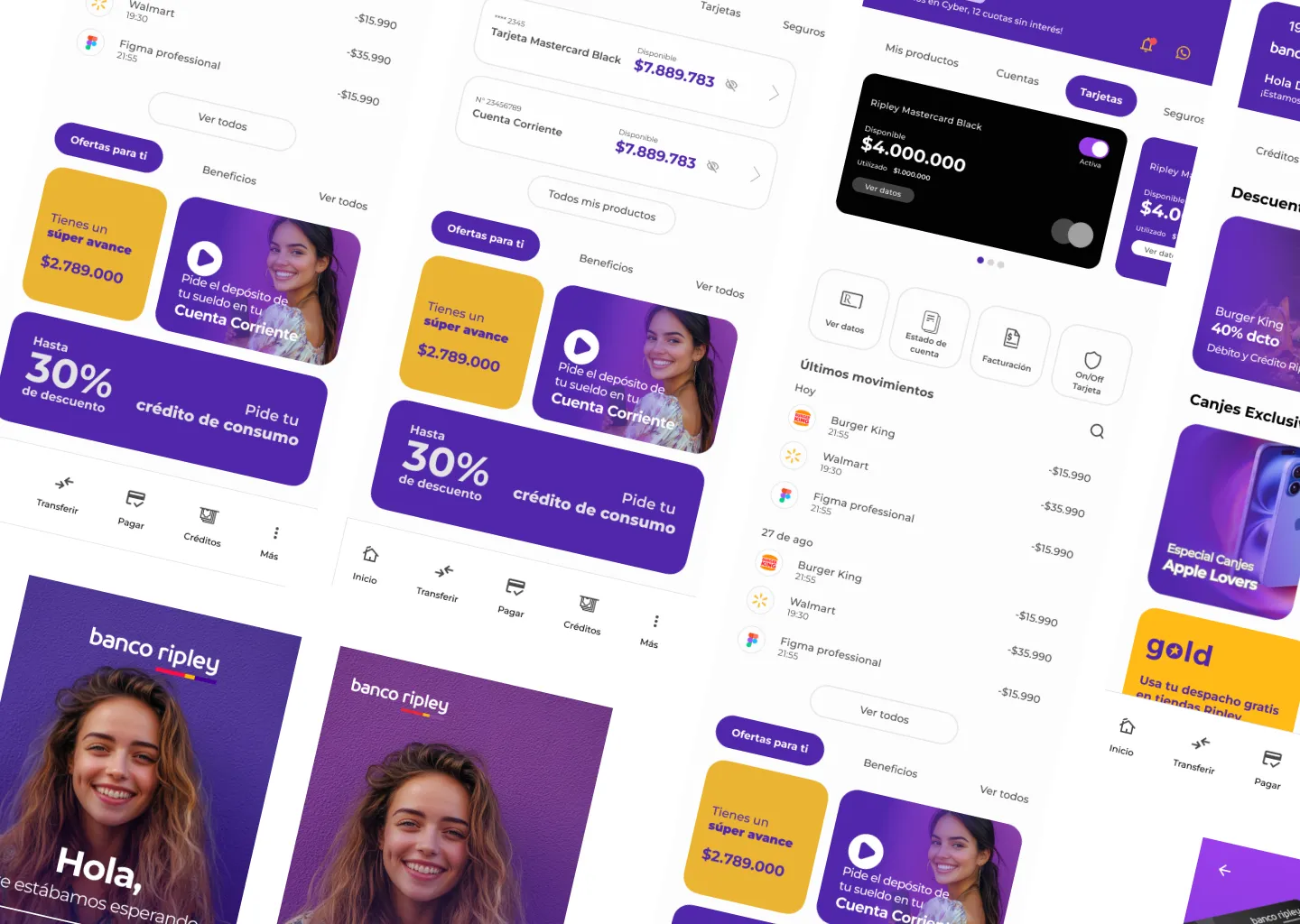

Redesign Banco Ripley
Project Overview
Banco Ripley is a Chilean retail bank within Grupo Ripley, closely integrated with Ripley’s department stores and e-commerce. The mobile app had not been updated in years, creating an outdated feel and UX friction.
- Role: Lead UX Designer (concept UI)
- Team: UX Research, UX/UI Design, Marketing, Development
- Timeline: [Add duration]
- Tools: Figma, AI-assisted photography (Midjourney)
Problem Statement
The legacy UI no longer reflected modern banking standards and accumulated usability issues over time. We also aimed to appeal to younger audiences through a refreshed brand experience.
- Outdated visuals and inconsistent patterns.
- Confusing grouping of products (accounts vs. credit cards).
- Underutilized brand moments at login and onboarding.
How might we modernize the app's UI, simplify key flows with familiar fintech patterns, and attract new users through a friendlier, dynamic identity?
Research & Insights
- Benchmarked neobanks, fintechs, and regional/global banks.
- Identified clarity and trust patterns to inform navigation and hierarchy.
- Opportunity to create a welcoming brand entry through imagery and tone.
Role & Approach
- Guided wireframing based on research opportunities.
- Developed the concept UI that seeded the rebranding.
- Used AI-generated photography to define an art direction for Marketing to reproduce in production shoots.

Design Concept
- Visual identity & onboarding: friendly, casual imagery on purple brand backgrounds; dynamic login with rotating images; onboarding that highlights key benefits.
- Home & navigation: clear separation between accounts and credit cards; dedicated area for benefits and promotions; cleaner detail views with prominent primary actions.
- Offers & benefits: unified hub for discounts from Banco Ripley and Ripley e-commerce.

Impact & Results
- Concept UI was well received by directors, unlocking full rebranding support.
- Raised UX team visibility and strengthened cross-functional collaboration.
- Established a modern design direction aligned with user expectations.

Reflections & Next Steps
- Design System: building a scalable library with Engineering.
- User Testing: validate and refine key journeys with real users.
- Implementation: collaborate closely under tight timelines to bring the experience to life.